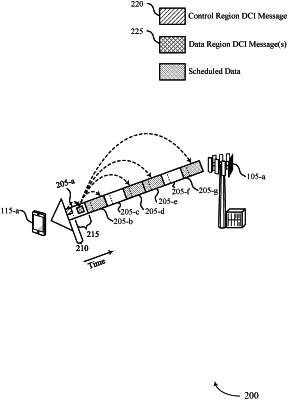| CPC H04W 72/0466 (2013.01) [H04W 72/23 (2023.01)] | 16 Claims |

|
1. A method for wireless communication at a user equipment (UE), comprising:
receiving a first downlink control information message in a downlink control channel, the first downlink control information message scheduling first resources of a downlink shared channel for a second downlink control information message;
receiving the second downlink control information message based at least in part on a first, UE-specific scrambling sequence, wherein receiving the second downlink control information message comprises receiving a set of coded bits in the first resources of the downlink shared channel the second downlink control information message scheduling second resources of the downlink shared channel for a data message;
demultiplexing the set of coded bits to obtain a first subset of the set of coded bits and a second subset of the set of coded bits;
descrambling the first subset of the set of coded bits using the first, UE-specific scrambling sequence to obtain the second downlink control information message and the second subset of the set of coded bits using a second scrambling sequence to obtain a third downlink control information message based at least in part on performing the demultiplexing; and
receiving the data message in the second resources scheduled by the second downlink control information message.
|